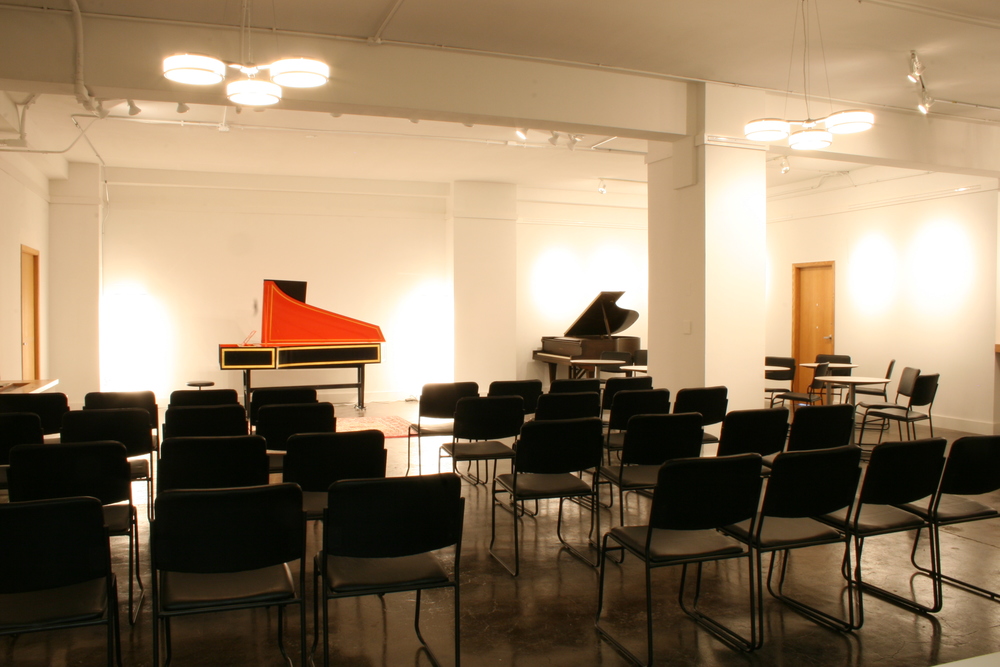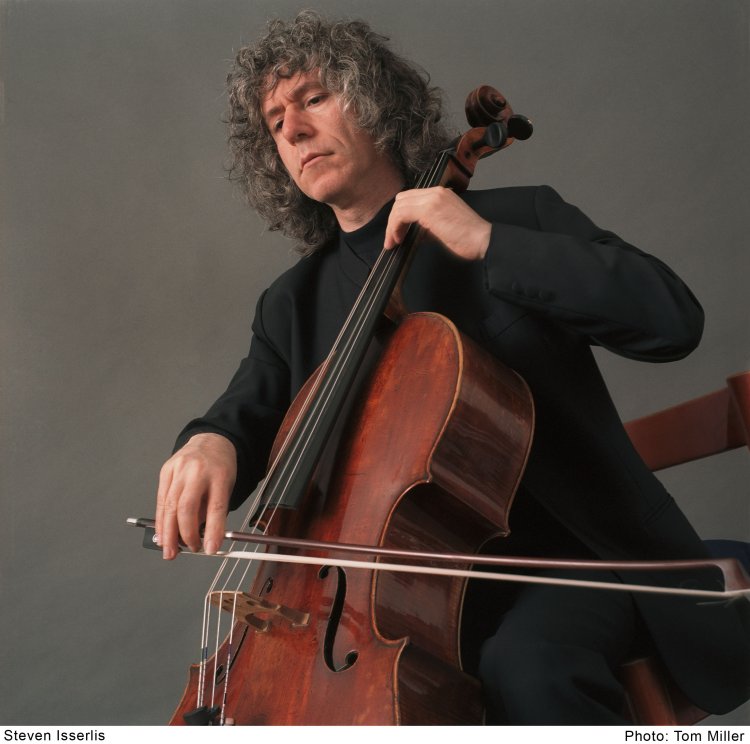By Andrea Wallick, cellist and Andy Fein, violin maker at Fein Violins (FineViolins.com)
Have you ever heard an instrument's sound described with physical adjectives such as "dark", "bright", "rough", or "thin"? Sound doesn't produce light, and it's not a physical object, so what do these words actually mean? And more importantly, what kind of words describe a good instrument's sound?
Rachel Barton Pine discusses the differences between Stradivaris and Guaneri del Gesus
So how can you know what kind of timbre an instrument will produce? There are actually machines that measure it using computational acoustic modeling. A sound can be picked up by a machine and mapped out into readable graphs to make comparing timbres easy. The way this works is through something called Fourier analysis. Every sound that is produced by an instrument is infinitely complex, but its qualities can be reduced to a more feasible set of parameters called the sound's partial tones, making up each sound's timbral space.
 |
| Fourier Transform Spectra of various woodwind instruments (Gonzolez) |
When discussing descriptions of sounds, with the understanding of partial tones and timbral space, certain words are associated with certain combinations of partial tones. For instance, if there are a larger number of higher partial tones than lower partial tones, an instrument will sound "brighter", whereas in contrast, a greater number of lower partial tones makes an instrument sound "darker" (Fritz, "Exploring"). Timbral space is quite complicated, but with spectral analysis and awareness, it becomes a tool for musicians to explore and embrace. Spectralist composers explored timbral spaces by attempting to recreate them using a different instrument for each partial tone. Here is an example of spectralist music by Grisey:
Timbral descriptions allow us to narrow down how to describe a specific sound that an instrument makes, but what kind of sound is desired? When comparing instruments, is a more mellow (darker) sound better or is a brighter sound better? The simplest answer to this question is that it depends on the person hearing it. Some people love sharp, bright tones in string instruments, and some people prefer mellow, warm sounds. This is greatly due to the fact that every person's ear perceives sound differently.
Current research states that certain parts of the ear pick up certain components of sound, so one person's ear might hear higher partial tones much louder than lower partial tones, and therefore a "brighter" instrument might be less sonically pleasing to them, whereas another person might hear a greater influx of lower partial tones and therefore prefer a brighter instrument.
So, there is no scientific answer as to what sonically is the best instrument for each person, and even this is with the assumption that every instrument is played by the same person who achieves the same quality of sound on every instrument that they play. In reality, every musician has their own way of pulling sound out of instruments. This makes choosing an instrument all the more complicated, because the only way to know what sound quality will be produced by a certain musician is by the musician playing the instrument. Multiple people can approach the same instrument and have vastly different opinions about what it feels like to play it and what sound is being achieved, so there is no replacement for each individual instrumentalist exploring each instrument.
| Stradivarius Violins (National Museum of American History) |
If you are currently in the process of picking an instrument, the best approach based on all of the layers of research is to play it yourself and get a feel for how to produce various qualities of sound. An easy way to do this is to play pieces from different time periods with different articulations and dynamics. This will allow for the best, most whole understanding of what that instrument can do in combination with your own playing.
The flaw here is that the sound we hear under our ears is quite different from the sound that is produced in a concert hall or from across the room. To account for this and still test based on your personal playing, though their ears will hear it differently, sometimes it is helpful to ask other people which instrument they think fits you the best, since it is generally universally apparent when an instrument is a good fit for someone and when it is not, disregarding timbral differences. We also have reliable digital technology currently that can give a good idea of what someone sounds like on an instrument. Obviously this is not comparable to hearing it live, but it allows for a better grasp.
Two different concert halls: notice the difference in size. Audial projection fully changes depending on which concert hall you are playing in
 |
| The Baroque Room |
Even with all these factors and the existence of personal preference in instrument sound, there are actually a few qualities that are almost universally understood as making an instrument "better". These are qualities that are generally associated with Stradivari and other instrument makers with high recognition, so perhaps they can also be taken into consideration into finding the best instrument match.
Though recent studies have found that many new string instruments hold up to the quality of Stradivarius instruments based on blind listening tests, the general association with Stradivarius instruments is that they project well in concert halls and can be heard above an orchestra in concerto settings and the like. Steven Isserlis, who plays on a Stradivarius cello, describes the tone of the instrument and says "a feature of Stradivarius instruments is that their tone seems to increase with distance" (Fritz, "Listener"). The idea of tone and timbre changing through a note's lifespan on string instruments is a very real component of playing a string instrument due to many factors such as weight of the bow, angle of the bow, the physical movement of sound waves, etc. With this in mind, the tone of every instrument should be studied at all locations on the bow and with all types of weight, and if an instrument projects well in hall settings, it will most likely be appreciated by the general public as a good quality instrument. This is not absolutely necessary, though, and the main factors that should be considered are how the specific instrumentalist feels about the instrument.
 |
| Steven Isserlis with his "Marquis de Coberon" cello (Isserlis) |
Finding an instrument match is one of the most daunting tasks of every musician's performing career, and there is no way to know exactly what kind of sound one is looking for until they try multiple instruments themselves and compare how it feels to play them and how they sound. Though there are a a few detailed terms that can describe the quality of sound an instrument produces, the sound is really mostly impacted by the performer, and therefore there is no substitution for playing testing and playing instruments until it is clear that a certain instrument is the right one for you. As someone (Andrea) who just recently purchased a cello, the moment of finding the right instrument is one of the most rewarding feelings, and it is absolutely worth the time and thoroughness.
Notes:
A note from Andy- The cello that Andrea chose is a pretty demanding and bright cello (made by a very good German maker in 1965). It's a bit hard for someone that's not a very advanced player to sound good on. Because of that, it waited in the shop for quite a while before Andrea chose it.
Need an instrument to match your tastes? We'd love to help you- Fein Violins
Steven Isserlis has a fantastic twitter (@StevenIsserlis)
Works Cited:
Fritz, Claudia, et al. "Exploring Violin Sound Quality: Investigating English Timbre Descriptors and
Correlating Resynthesized Acoustical Modifications with Perceptual Properties." The Journal of the
Acoustical Society of America, vol. 131, no. 1, 2012, pp. 783-94.
Fritz, Claudia, et al. "Listener Evaluations of New and Old Italian Violins." Proceedings of the National
Academy of Sciences - PNAS, vol. 114, no. 21, 2017, pp. 5395-400,
https://doi.org/10.1073/pnas.1619443114
"Grisey Partiels Asko." Youtube, uploaded by Archipel Festival - Genève. 15 June 2015.
https://youtu.be/1v7onrjN6RE.
Isserlis, Steven. Steven Isserlis. "The cellos". stevenisserlis.com/the-cellos/. Accessed May 2023.
Minnesota Orchestra. "Our Building". minnesotaorchestra.org/about/our-building/. Accessed May 2023.
National Museum of American History. "Stradivarius Violin: "The Greffuhle".
americanhistory.si.edu/collections/search/object/nmah_739714. Accessed May 2023.
Siedenburg, K., Saitis, C., McAdams, S. "The Present, Past, and Future of Timbre Research." Springer
Handbook of Auditory Research, vol.69. 2019.
The Baroque Room. thebaroqueroom.com. Accessed May 2023.

No comments:
Post a Comment